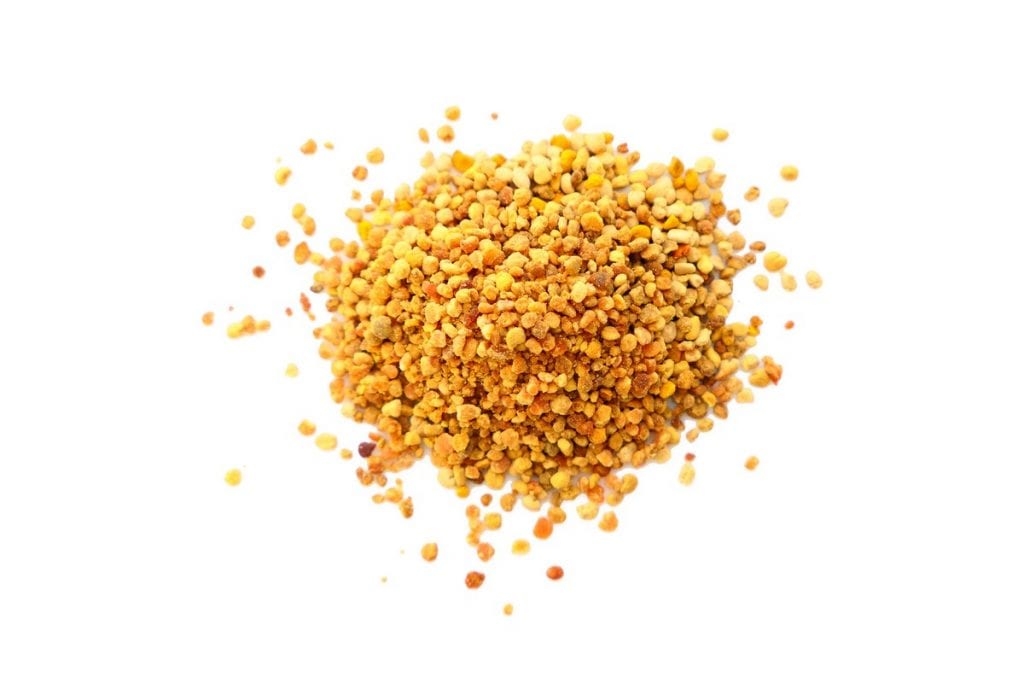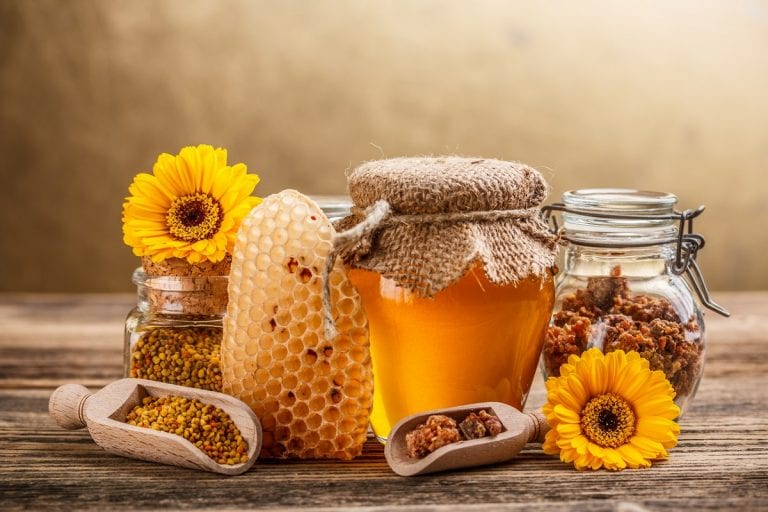Pollen, royal jelly and propolis: the bees’ gifts
If you think about it, the production of honey is a true miracle of nature, one of the rare cases in which human intervention is reduced to a minimum: to the contrary, any creation that takes place inside the hive is to all intents and purposes exclusive merit of the bees, essential for plant pollination, safeguarding biodiversity and the balance of ecosystems. The beekeeper then has the task of harvesting the product and ensuring a healthy life for these creatures who are constantly at work. When you stop to reflect on the so fast pace of life of these small animals, the first image that forms in our mind is undoubtedly honey, but this specialty is not the only product present inside the beehive: there's also pollen, royal jelly and propolis which are the result of the painstaking work of bees. Together with Carmine Finocchio of the Delizie dell’Alveare di Tornareccio company, we tried to shed some light on these specialties.

Pollen, the staple food of the hive
Necessary for the development and maintenance of the entire hive, pollen is a yellowish powder present in plants that reproduce through a seed. The bees collect it, take it to the hive and use it for food, "it is the basic source for any family." Not only that: flying between flowers in bloom, the bees "carry this dust on their legs, pollinating even the sterile flowers, an operation that has a fundamental effect on the environment." But how is pollen collected? So-called traps are placed at the entrance to the hive, "perforated sheets that detach pollen from the bees' legs as they pass through." As soon as the pollen is recovered, the beekeeper must freeze it to preserve it at its best, "and it can then be sold fresh or dehumidified and dried."
Properties and uses of pollen
During the packaging phase, the product will be marked on the label as a food supplement, "it's a true ally for our health: just take a little in the morning to fill up on energy." Pollen is, in fact, a precious source of proteins, vitamins and minerals, strengthens the body, contains good percentages of iron and is a powerful natural antioxidant. It is advisable to ingest it early in the morning, together with a little yogurt, dissolved in tea or herbal teas, or even on its own, in spoonfuls, "chewing it well because it is very hard."
Royal jelly, the food of the queen bee
It is said she is larger and more long-lived for this reason: the queen bee, the adult and fertile female of the colony, normally the mother of all the others, who is fed royal jelly. A product secreted by the nurse worker bees (aged between the 5th and 14th day of life) through special glands present on their head, a light yellow substance that is also used to feed the small larvae in the first days of their life, as it is highly rich in protein. To obtain it, "it's necessary to take one or more eggs from the hive and place them in larger cells in a hive called orphan, because it has no queen." After about 36 hours spent in the orphan hive, the now grown larvae are removed "and royal jelly is sucked, to be sold fresh or in a freeze-dried version."
Properties and uses of royal jelly
It is often recommended during the growth phase, but in reality royal jelly is good for everyone, young and old, without forgetting the elderly, who can take it to fight fatigue typical of old age. It is impossible to mention all its properties: it stimulates appetite, fights intestinal disorders, has a beneficial effect on cholesterol and anemia. It is also good for the skin, for hair health, it is an extraordinary tonic and anti-inflammatory: "To benefit the most from it, it's good to consume it in the morning on an empty stomach. We must also remember to always keep it in the refrigerator."
Propolis, the protection of the hive
Another product that's always present in bee colonies is propolis, a resinous substance found on the buds and bark of plants, which is collected by bees and processed with the addition of wax, pollen and enzymes produced by their own organisms. It's mainly used to seal cracks and holes, and also to cover any dead foreign bodies inside the hive: "It may happen that a lizard or some other animal enters, which then does not survive. The bees cover the dead animal with pollen and seal everything with propolis." It is also used in winter to keep the cold air from filtering in on the coldest days: in short, a protection that bees use on several occasions and that was also used by the ancient Egyptians to mummify the pharaohs.
To obtain it, the beekeeper advises not to scrape it off, "otherwise other substances could also be taken away," but to rather use special nets placed above the honeycombs, the hexagonal cell structures built by bees that contain pollen, honey and royal jelly. Once extracted, the nets are placed in the freezer, and then lightly beaten so as to detach the propolis. A product which should be consumed only in an alcoholic or glycolic solution, "can be tasted fresh but it is very bitter and sticky."
Properties and uses of propolis
"It is defined as a natural antibiotic, and in fact its properties are many, as well as its uses in the pharmaceutical field." It is effective to combat sore throats, colds, flu, asthma and abscesses, it can be used in case of inflammation of the skin, mucous membranes or in the presence of pus, and is therefore often present in the composition of ointments and creams. The substances present within propolis are also active against ulcers and digestive disorders, and help protect the liver and fight the formation of cavities. It is sold in vials, tablets, oils and ointments in pharmacies or herbalists.
Delizie dell’Alveare – Tornareccio (CH) – via S. Stefano, 18 - apicolturadeliziedellalveare.it/
by Michela Becchi


 Meloni: "Tariffs? If necessary, there will be consequences. Heavy impact on agri-food sector"
Meloni: "Tariffs? If necessary, there will be consequences. Heavy impact on agri-food sector" The Government honours the greats of Italian cuisine, from Bottura to Pepe. Massari: "Thank you, Meloni, the only one who listened to us"
The Government honours the greats of Italian cuisine, from Bottura to Pepe. Massari: "Thank you, Meloni, the only one who listened to us" "We must promote a cuisine that is not just for the few." Interview with Massimo Bottura
"We must promote a cuisine that is not just for the few." Interview with Massimo Bottura Wine was a drink of the people as early as the Early Bronze Age. A study disproves the ancient elitism of Bacchus’ nectar
Wine was a drink of the people as early as the Early Bronze Age. A study disproves the ancient elitism of Bacchus’ nectar "From 2nd April, US tariffs between 10% and 25% on wine as well." The announcement from the Wine Trade Alliance
"From 2nd April, US tariffs between 10% and 25% on wine as well." The announcement from the Wine Trade Alliance






